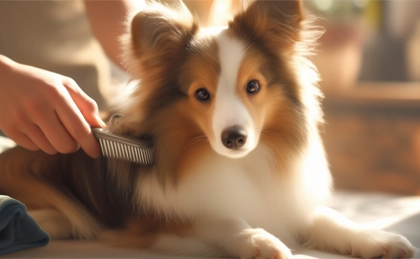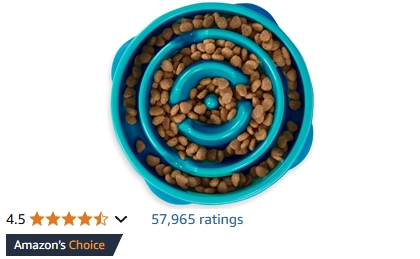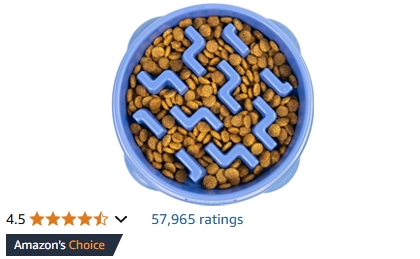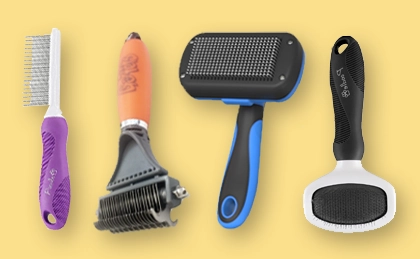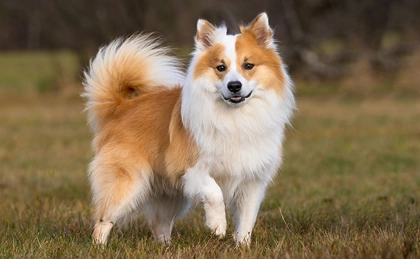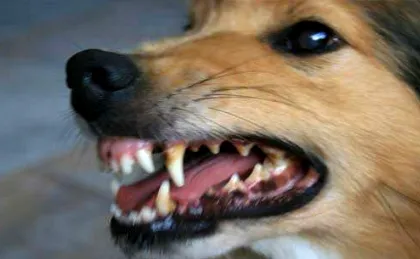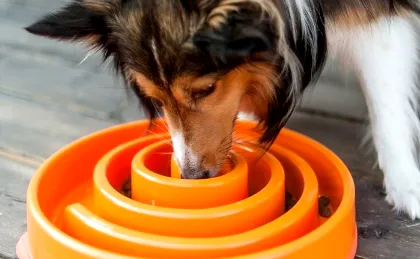Canine obesity is a growing epidemic, with studies showing that a staggering 59% of dogs are overweight or obese in the US. Even being just 10% overweight can reduce a dog's lifespan by a third. Quality of life is also impacted by the onset of arthritis, diabetes, heart disease, and cancer. It is a serious health problem we can't just ignore.
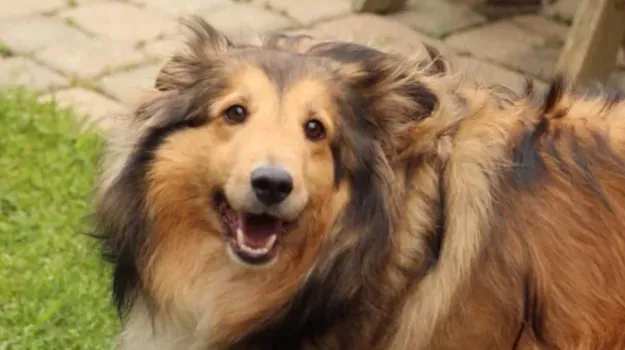
This sweet obese Sheltie named Max was 70lbs when he was rehomed by Rescue Dogs Rock NYC.
It's easy to overfeed a Sheltie—especially a food-centric one like Howard Woofington Moon. What's more, it's not always easy to spot the early signs because the body fat hides under all that fur. Even in the short term, the extra weight puts excessive strain on their joints and bones which triggers a perpetual cycle of pain and degeneration. Any underlying joint conditions are exacerbated and the dog is less likely to exercise enough, which reduces their daily calorie burn. So what can you do?
Is My Sheltie Fat?
First, figure out if your Sheltie is overweight or even obese by performing any of these simple fat tests.
The rib test. Gently reach into your Sheltie's fur and take hold of all the soft tissue around his ribs. If you're holding a very thin layer of fat and can easily feel the bones of the rib cage, he's a healthy weight. But if you've got a handful of fat, that's too much.
The dorsal view. look at the shape of his body from above. This test isn't as reliable in Shelties because the double coat distorts the body shape, but with a keen eye you can see if he's looking a little too thick around the waist.
The vet scales. If you have an obedient Sheltie, sit them on your home scales and track their weight precisely. Of course vets have extra large floor scales to weigh pets, so you can always drop in for a quick weight check.
If you discover your Sheltie is fat, reduce their serving size by 25-50% and perform the above fat tests weekly. Maintain the calorie defecit until the fat around is ribs is just a thin layer.
How Much Should I Feed My Sheltie?
The exact amount you feed depends on several factors. You need to take into account his body type, activity levels, health status, and whether or not he's intact—all of which determine his metabolism and calorie requirements.
This is why kibble manufacturers say you should feed your Sheltie 1-2 cups of kibble per day. That's a 100% range between their high and low-end estimates! Not helpful. And remember, they're out to sell kibble.
Unless you have a particularly active or large Sheltie, stick to the lower end of this 1-2 cup range. If your Sheltie eats dog treats and table scraps as well, he may need less than one cup of kibble. There were certainly times when we were feeding our Shelties half a cup of kibble per day along with limited scraps.
Also remember that the typical American Sheltie weighs 22lbs (10kg) and the English Sheltie weighs 18lbs (8kg). Shelties are small dogs who don't need anywhere near the same amount of food as humans. Indeed, feeding a Sheltie just 28g of cheese is the energy equivalent of a human eating an entire burger. What we see as a snack is actually an entire meal for a Sheltie!
How Often Should I Feed My Sheltie?
The latest science is mixed. Currently, many pet organisations suggest splitting feeding time into two meals about 12 hours apart. This is based on the fact that when the stomach remains empty for much more than 12 hours, it starts to become hyper-acidic which can make your Sheltie nauseated.
However, a large survey of 24,000 dog owners recently found that dogs fed just once a day are less likely to be diagnosed with age-related conditions. This also aligns with their evolutionary history as predators. Indeed, wolves go for days without eating. So the healthiest feeding frequency is not entirely clear, but official guidelines point to twice a day: morning and night. That one cup of kibble should be split evenly between each meal.
If your food-obsessed Sheltie whines for food between meals, you can offer him small amounts of low-calorie scraps, like cooked or raw vegetables. Just bear in mind these 30 foods are toxic to dogs. These include innocent-seeming foods like grapes, tomatoes, certain vegetable peels, fruit pips, and seeds.
How Can I Get My Sheltie to Eat Slower?
Our own Mr Gobble Guts always ate too fast, swallowing his kibble whole in a frenzy before anyone else could. Mealtimes were followed by several minutes of hiccupping and weird snuffling noises like he'd literally inhaled the stuff.
So we got Howard and Piper a slow feed dog bowl each, which basically stopped them from vacuuming up large volumes of kibble in one go. The bits fall into various nooks and crannies of the bowl, which dogs have to fish out carefully in small amounts at a time. Slow feed bowls have the seal of approval from vets and prevent bloating, hiccups, and regurgitation. We also found they take the competitive aspect out of eating, enabling each dog to focus on his own dinner without rushing to race to the other's bowl.
How Else Can I Get My Sheltie to Lose Weight?
Besides cutting back on the calorie count, ensure your Sheltie gets to run outdoors every day. It's not enough to just have him potter around the yard—he needs to go on an outdoor adventure with you.
Exploring the territory beyond the house excites him to run around and discover all kinds of smells, sights, and other dogs. A healthy Shetland Sheepdog needs 30-60 minutes of exercise every day, and more if you're trying to accelerate his weight loss.
Swimming is excellent for obese Shelties as it burns lots of calories without straining his already overworked joints. If you live near water, it's well worth desensitizing your Sheltie to water wile he's still young.
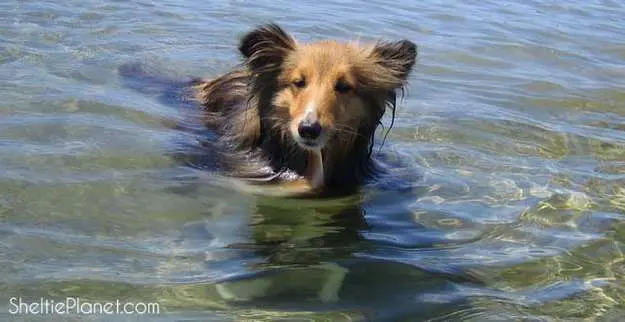
Swimming is great exercise for Shelties, but you need to desensitize him to water first.
Helping your Sheltie lose weight comes down to the simple mantra: move more, eat less. And it works. Once you've got his weight down to a healthy level, he'll be much more likely to live a long, disease-free life.
